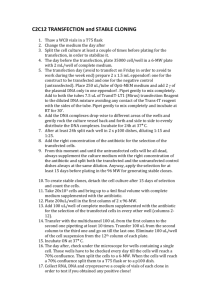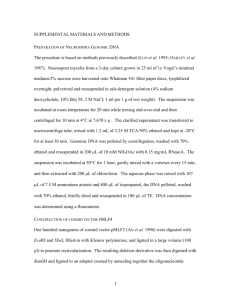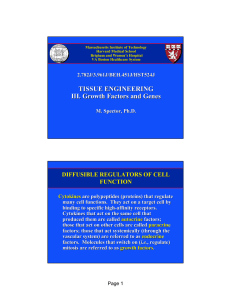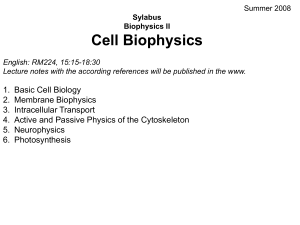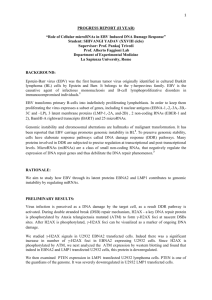A highly stable human artificial chromosome (HAC) containing the
advertisement
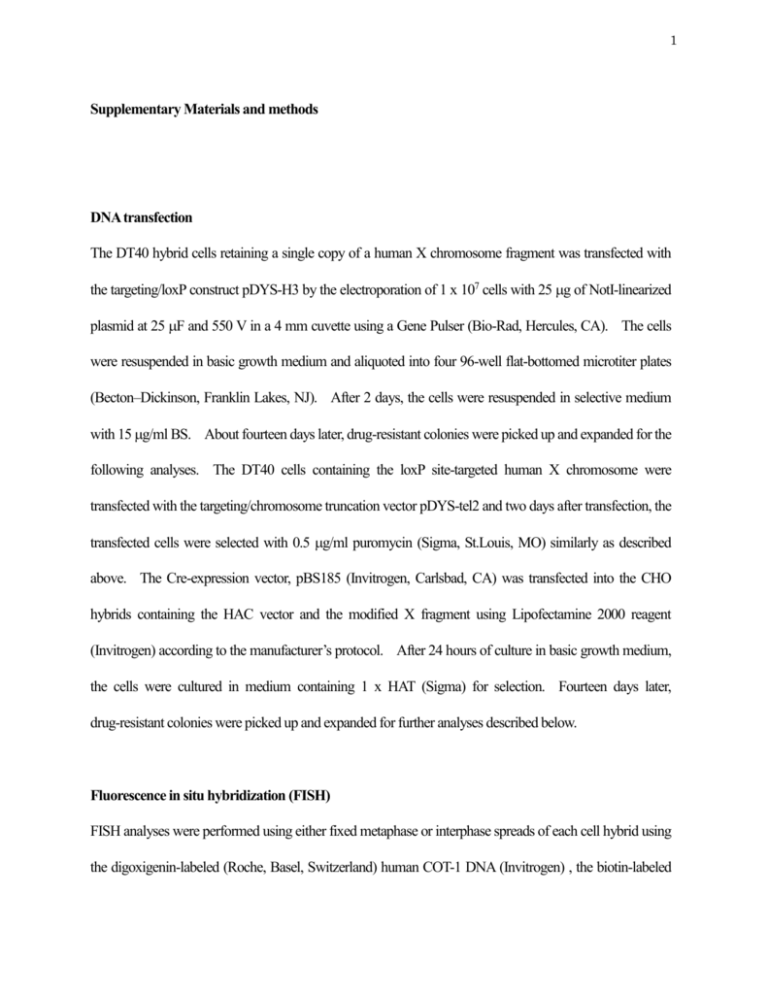
1 Supplementary Materials and methods DNA transfection The DT40 hybrid cells retaining a single copy of a human X chromosome fragment was transfected with the targeting/loxP construct pDYS-H3 by the electroporation of 1 x 107 cells with 25 g of NotI-linearized plasmid at 25 F and 550 V in a 4 mm cuvette using a Gene Pulser (Bio-Rad, Hercules, CA). The cells were resuspended in basic growth medium and aliquoted into four 96-well flat-bottomed microtiter plates (Becton–Dickinson, Franklin Lakes, NJ). After 2 days, the cells were resuspended in selective medium with 15 g/ml BS. About fourteen days later, drug-resistant colonies were picked up and expanded for the following analyses. The DT40 cells containing the loxP site-targeted human X chromosome were transfected with the targeting/chromosome truncation vector pDYS-tel2 and two days after transfection, the transfected cells were selected with 0.5 g/ml puromycin (Sigma, St.Louis, MO) similarly as described above. The Cre-expression vector, pBS185 (Invitrogen, Carlsbad, CA) was transfected into the CHO hybrids containing the HAC vector and the modified X fragment using Lipofectamine 2000 reagent (Invitrogen) according to the manufacturer’s protocol. After 24 hours of culture in basic growth medium, the cells were cultured in medium containing 1 x HAT (Sigma) for selection. Fourteen days later, drug-resistant colonies were picked up and expanded for further analyses described below. Fluorescence in situ hybridization (FISH) FISH analyses were performed using either fixed metaphase or interphase spreads of each cell hybrid using the digoxigenin-labeled (Roche, Basel, Switzerland) human COT-1 DNA (Invitrogen) , the biotin-labeled 2 BAC DNA (RP11-954B16), the biotin-labeled PGK-Puro plasmid DNA or the biotin-labeled CMV-BS plasmid DNA essentially as described previously [26]. Chromosomal DNA was counterstained with DAPI (Sigma). The images were captured using a microscope (Nikon, Tokyo, Japan) equipped with a photometric CCD camera, digitally processed and visualized with the Argus system (Hamamatsu Photonics, Hamamatsu, Japan). Generation of chimeric mice containing the DYS-HAC Chimera production was carried out as described previously [26]. Briefly, ES cells were injected into 8-cell stage embryos derived from jcl: MCH (ICR) mice (Crea Japan, Tokyo, Japan) and then were transferred into pseudopregnant jcl: MCH (ICR) females. All animal experiments were approved by the Institutional Animal Care and Use Committee of Tottori University. Immunofluorescence staining Serial transverse sections (10 m) of the muscles on glass slides (MATSUNAMI, Osaka, Japan) were generated using a cryostat (Fisher Scientific, Pittsburgh, PA). The sections were blocked with 1% BSA in PBS for 1hour at room temperature, and incubated with the first antibody MANDYS106 (diluted 1:4; a gift from Dr. G. Morris, Keele University, UK) for 1 hour at room temperature. After a rinse, the secondary antibody Alexa Fluor 555 goat anti-mouse conjugate (diluted 1:1000; Molecular Probes, Eugene, OR) was applied for 1 hour at room temperature. The images were taken with a microscope (Carl Zeiss, Heidenheim, Germany).
